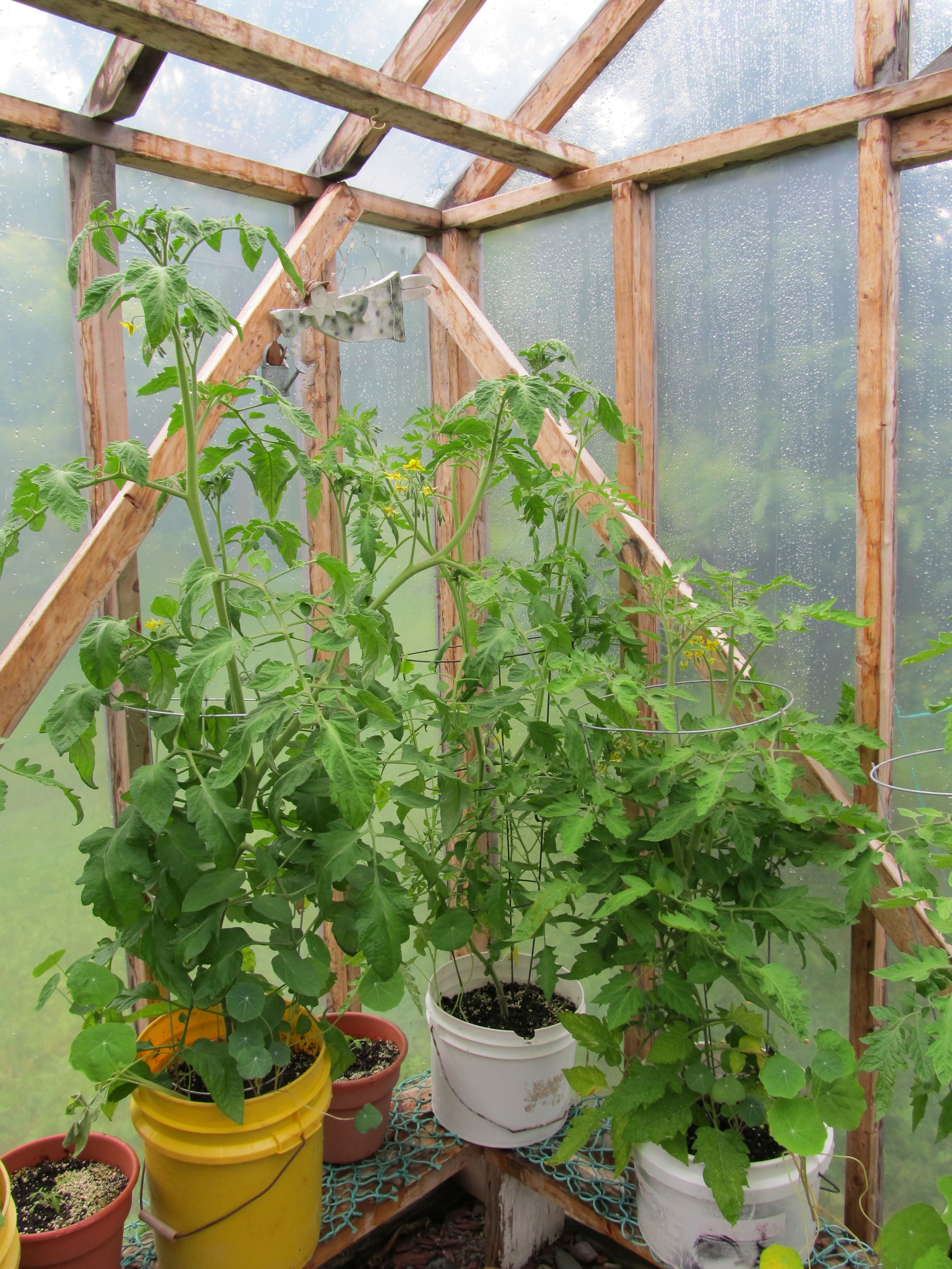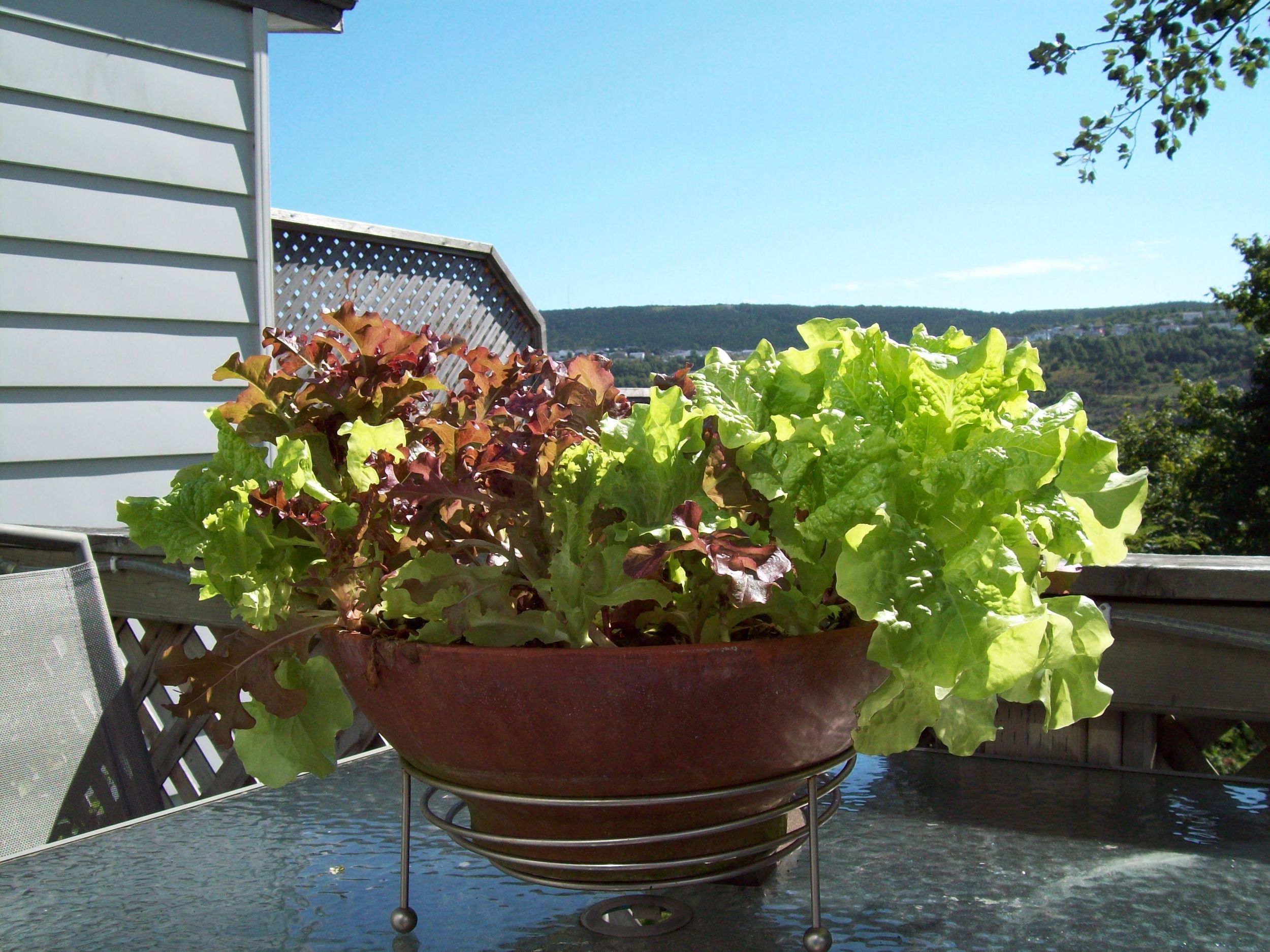This post is an excerpt from the Root Cellars Rock Food Skills Workshop on container gardening. 8 workshops will be launched as part of a kit in late spring 2012, so keep an eye on the blog! For more information check out this post.

With the weather we get in Newfoundland and Labrador, we may not think of watering as always being an issue, but containers dry out much faster than in-ground gardens and should be checked and watered often. Every day or two in the summer check on your containers. Insert a finger into the soil up to the second knuckle and then pull it out. If it comes out dry, then water. If it comes out damp, wait and check again the next day. If your container has a dish to catch extra water underneath, be sure to pour off that extra water a few minutes after watering so that plants don't continue to sit in it.
Rather than using tap water, if you have enough space you can set up a rain barrel. Rain barrels collect water from the down spouts of buildings during rainfall. They have a number of benefits: 1) they help reduce the use of tap or well water, 2) they provide a ready source of non-chlorinated water for gardens, lawns and outdoor cleaning, 3) they work well with drip irrigation systems, and 4) they are inexpensive and easy to make. For information on how to make your own rain barrel, refer to this post.
Plants prefer non-chlorinated water, so if you are watering with tap water then fill a jug or watering can, leave the lid off, and let it sit for a day or two to allow the chlorine to evaporate off. Keep refilling several jugs and store them so that you will always have one ready when you need to water. If you plan to store jugs of water outdoors, put a small piece of screen or cheesecloth over the opening so that insects or debris can't get into your water.
Should your containers dry out faster than you can water them, or if you plan on going away for a few days during the growing season, then you can try these tricks to keep plants watered:
- Water soil well and then cover the soil around the plants with a layer of mulch such as dry leaves, wood chips, or dry grass clippings. The mulch will help soil retain water for longer by slowing its evaporation. Each time you water, push the mulch to the side, water, and then re-cover the soil with the mulch.
- In the bottom of a larger water-tight container, pour a layer of perlite about an inch deep. Place your smaller container that has drainage holes inside the larger container. Fill the larger container up to the level of the perlite with water. The soil will wick that water upward as it needs it over time. Be careful leaving a system like this outdoors during heavy rain though because without drainage in the larger container it could fill with too much water and drown the plant’s roots.
- Make your own self-watering containers. These usually involve a reservoir of water created in the bottom of the container, with a tube or pipe that leads up to the surface where water is poured in. Soil wicks water up from the bottom as needed over time. To find out how to make a self-watering container, refer to this link from the Halifax Garden Network with step-by-step instructions.
- Set up a drip irrigation system for your container plants. These use water very efficiently by passing water through a pipe or tube directly onto the soil of plants. Drip irrigation systems can be purchased at garden centres or made at home. Refer to this resource from the University of Colorado Extension for more information.
Note: Overwatering
Sometimes container plants may seem limp and dried out even though you have been watering them. The actual problem may be overwatering. When container plants are overwatered their roots cannot get enough oxygen and are smothered. As a result they are unable to soak up water even in moist soil. Continuing to water may worsen the damage.
To check for this do the finger test described above and if the soil is moist but the plant looks dried out then you may have overwatered before. Give the roots a few days to dry out and recover and then check the soil again before re-watering. Also consider adding more perlite or sand to your soil the next time you start a new container to make little air pockets in the soil.
If your soil has become too waterlogged to dry out and the plant is dying, then you can re-pot the plant into new dry container mix; be very gentle with the roots as you do so. In future, you may want to choose containers with better drainage.




